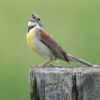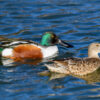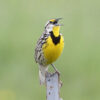Mitch Leachman
Anxiety. Anger. Sadness. Frustration. Layoffs. Wage cuts. Sickness. Loss of loved ones. And so much more. Our world is very different than it was just a few short months ago. It can be very hard to stay positive, to see good in the world.
One surefire way to see good is to do good. And you can do good for Planet Earth right at home. All you have to do is get dirty. Yup. Gardening. You can garden for birds, or bees, or butterflies, or my favorite “all of Nature.” All you need are native plants, a little patience and some resources.
If you’re a real ‘do-it-yourselfer,’ you might start with National Audubon’s Plants for Birds or the National Wildlife Federation’s Native Plant Finder. Both provide a zip code search feature where you can query plant lists for your local area and for a variety of interests and plant type.
Should you prefer a little advice to help set you on the right path and explore just what might be possible for your space, St. Louis Audubon’s own Bring Conservation Home program provides detailed, written recommendations unique to your landscape and based on your goals and interests.
After a re-tooling in April due to COVID-19, the BCH staff and volunteers have been extra busy providing our consultation service by video call. While there are some limitations to meeting remotely, the flexibility of the technology has made our discussions even more insightful. Both the Habitat Advisors and landowners have given the process big thumbs up!
If you’re reading this, you may very well be one of the 86+ million Americans who participate in wildlife watching. Won’t you step up and ‘do good’ for the wildlife you already adore? Join the estimated 77% of American households that participate in gardening activities.
Digging in the dirt is exercise, 200-300 calories burned per hour. Gardening is outdoors, in the fresh air, and away from your phone and computer screen. It’s creative; you can design a space unique to you and your home. You need not be an expert to garden, and the whole family can join in – there is no age limit on getting dirty.
With gardening for wildlife, you will be creating your own sanctuary that will deliver priceless encounters with Nature, day after day, season after season that will always be new and forever inspiring. Most importantly, you will be doing good for Planet Earth, one garden and one plant at a time!
Photo Credit: Gray Catbird and American Beautyberry by Chris Kirmaier




